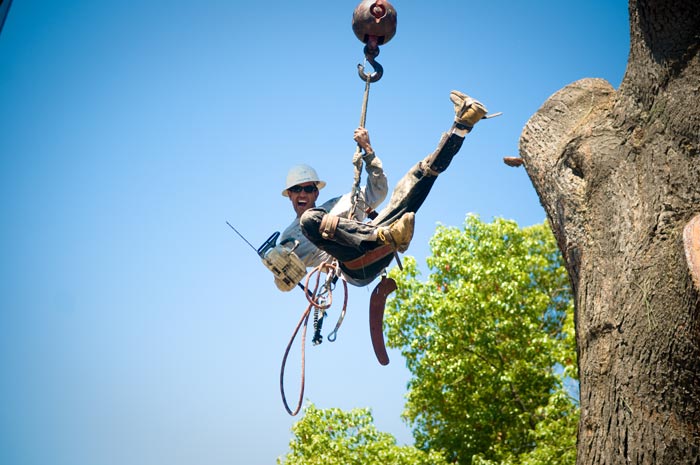
ANSWER: A DEAD TREE
Tree pruning not only requires the proper equipment and machinery, but arboriculture knowledge on the biology of trees and their responses to trimmings. A “cut-happy” tree trimmer can, in fact, weaken or, in worst-case scenarios, kill your beloved tree. It is important to know the limit to how much pruning a tree can handle and the proper seasonal timing to trim a tree. When performed properly by a skilled tree trimmer, pruning can improve your tree’s appearance and limb strength. However, when done improperly, the result can be a sick tree with weak, hazardous limbs.
All pruning has some degree of negative impact on tree health, whether it be a temporary minor effect to one that is significant and long-term. A cut on a tree can be compared to a cut on a human body. Our skin acts as a protective barrier against pathogens and infection. When a cut is inflicted on our skin, the body’s system quickly reacts by using up energy to seal the wound. In a similar manner, pruning on a tree causes wounds in which wood decay fungi or other disease-causing pathogens can enter. The tree immediately reacts to close up the wound. The loss of foliage also reduces the tree’s ability to feed itself with the sun’s energy — causing it to rely more on stored energy to replace lost foliage, close wounds, and resist pathogen invasion.
When we fall and scrape our knees, we feel momentary pain and notice the resulting scab. If our immune system is strong and/or we were able to keep the wound clean, then the knee scrape is simply that — a knee scrape. A small wound that quickly seals up means that we are less likely to worry about infection, and our body is able to heal the scrape without us noticing any loss of energy. On the contrary if we suffered major bodily injuries from a car crash, we would notice more sustained –maybe even lifelong — effects, and our body would noticeably require more rest, as a result of the increased usage of energy to heal our more serious wounds. More large open wounds also leaves our body more susceptible to pathogen invasion.
In respect to trees, a small, properly made cut will generally seal quickly, thus protecting the exposed wood from decay. Large cuts that expose heartwood, or the dense inner part of a trunk, normally decay and spread into the main stem for some distance. Such cuts typically result in a weakened branch that is hazardous and prone to failure.
Tree pruning has two opposite effects on a tree: dwarfing or invigoration. With the dwarfing effect, the tree’s physical stature decreases with less foliage, fewer branches and buds. The capacity to grow is reduced because less leaf surface means less energy production. The opposite effect of invigoration is the more common result of tree trimming. When a tree’s size is reduced, more water and nutrients become available to the rest of the tree. New, fast-growing shoots emerge with leaves that grow larger and typically greener in color. The degree of dwarfing or invigoration remains contingent on the severity of pruning.
As a general rule, no more than 25% of a tree’s foliage or branches should be trimmed. At LC Tree Service, we like to stay on the safer side and lean more towards a 20%. Young trees, however, can tolerate more severe pruning, which is why we recommend beginning to influence the growth of the tree into the shape you desire when your tree is still young. Older trees, on the other hand, are less tolerant and should only be pruned as needed. Regardless of age, in order to avoid having to make larger cuts, it is important to keep your tree on a regular pruning schedule. This will help keep your trees looking great and healthy through the years.
For more information or to speak to one of our tree specialists, please contact LC Tree Service at

